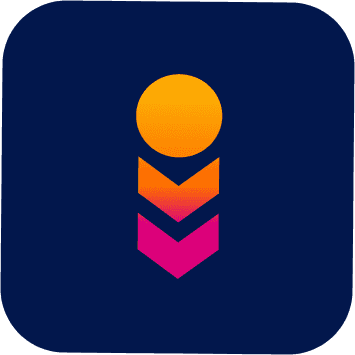Marketer
Here’s How You Can Secure 1 Million App Downloads
Reaching the milestone of one million app downloads demands a well-crafted strategy and a deep understanding of user behavior. In this comprehensive guide, we delve into 20 actionable points, each with detailed explanations and real-world examples, to guide you on the path to one million downloads.
- Understand Your Audience’s Pain Points:
- Explanation: Start by identifying the problems your target audience faces. Tailor your app to address specific pain points, ensuring that it meets users’ needs effectively.
- Example: Grammarly, recognizing the need for flawless communication, provides real-time grammar checking and suggestions, catering to users seeking polished written communication.
- Optimize App Store Metadata:
- Explanation: Improve your app’s visibility in app store searches by strategically incorporating relevant keywords into your app’s title and description.
- Example: Slack optimizes its metadata with keywords related to team communication and collaboration, ensuring a higher likelihood of appearing in relevant search results.
- Leverage Social Media for Virality:
- Explanation: Utilize social media platforms to create a buzz around your app. Encourage users to share content, fostering virality and expanding your app’s reach.
- Example: Snapchat’s Stories feature encourages users to share visual content that disappears after 24 hours, driving engagement and attracting new users through the viral nature of shared stories.
- Implement a Referral Program with Incentives:
- Explanation: Motivate your existing users to promote your app by offering incentives for successful referrals. This can significantly boost your app’s organic growth.
- Example: Dropbox’s referral program provides additional storage space for both the referrer and the new user, creating a win-win situation that fueled the app’s early growth.
- Invest in Targeted Paid Advertising:
- Explanation: Allocate resources to targeted advertising campaigns on platforms where your potential users are most active. This approach ensures that your app is seen by the right audience.
- Example: Clash of Clans effectively utilized in-app ads to reach its target gaming audience, resulting in a rapid increase in user acquisition.
- Engage in Influencer Collaborations:
- Explanation: Partner with influencers in your app’s niche to leverage their audience and build credibility. Influencers can authentically promote your app to a broader audience.
- Example: Nike Training Club collaborates with fitness influencers, expanding its reach and gaining trust within the fitness community through authentic endorsements.
- Utilize User-Generated Content:
- Explanation: Encourage users to generate content, such as reviews, testimonials, and images related to their experiences with your app. User-generated content builds trust and authenticity.
- Example: Airbnb’s success is partly attributed to user-generated reviews and photos, providing potential users with authentic insights into the accommodations they may choose.
- Implement Gamification to Boost Engagement:
- Explanation: Integrate gamified elements into your app to make the user experience more enjoyable and engaging. Gamification encourages users to interact with your app consistently.
- Example: Duolingo employs gamification by incorporating rewards, levels, and challenges into its language learning platform, motivating users to practice regularly.
- Optimize for App Store Algorithms:
- Explanation: Stay informed about app store algorithm updates and adjust your app accordingly. Regular updates, improvements, and new features can positively impact your app’s visibility.
- Example: TikTok’s success is driven, in part, by its frequent updates that align with app store trends, ensuring continued visibility and relevance.
- Host Webinars and Live Events:
- Explanation: Organize webinars or live events to showcase your app’s features, answer user questions, and provide valuable insights. This creates a personal connection with your audience.
- Example: Zoom gained widespread popularity by hosting webinars, demonstrating the app’s capabilities, and engaging directly with potential users, leading to increased downloads.
- Leverage Cross-Promotion with Other Apps:
- Explanation: Collaborate with other apps that share a similar target audience to cross-promote each other. This strategy expands your app’s visibility to users who may be interested in your offering.
- Example: Candy Crush Saga and Farm Heroes Saga cross-promote within each other’s apps, leveraging their shared user base and increasing the likelihood of downloads for both games.
- Implement In-App Personalization:
- Explanation: Personalize the user experience by tailoring content, recommendations, and features based on individual user preferences. This enhances user satisfaction and encourages continued app usage.
- Example: Spotify utilizes in-app personalization by curating playlists based on user listening habits, providing a customized music experience and fostering user loyalty.
- Encourage User Reviews and Ratings:
- Explanation: Actively prompt users to leave reviews and ratings on app stores. Positive reviews enhance your app’s credibility and can influence potential users to download.
- Example: Yelp prompts users to leave reviews after dining at a restaurant, creating a robust database of user-generated content that aids others in making informed decisions.
- Optimize App Loading Speed:
- Explanation: Ensure your app loads quickly and efficiently to provide a seamless user experience. Users are more likely to abandon slow-loading apps, impacting download numbers.
- Example: Google Chrome optimizes its loading speed, providing users with a fast and responsive browsing experience, contributing to its widespread adoption.
- Enable Offline Mode:
- Explanation: Implement an offline mode, allowing users to access core features even without an internet connection. This enhances user convenience, especially in areas with intermittent connectivity.
- Example: Google Maps allows users to download maps for offline use, ensuring navigation remains available even in areas with limited or no internet access.
- Implement Augmented Reality (AR) Features:
- Explanation: Integrate AR features to provide users with an immersive and interactive experience. AR can set your app apart and attract users seeking innovative functionalities.
- Example: Pokémon GO’s success is attributed to its groundbreaking use of AR, merging the virtual and real worlds to create a unique gaming experience that captivated millions of users.
- Streamline User Onboarding:
- Explanation: Simplify the onboarding process to ensure new users can quickly understand and navigate your app. A seamless onboarding experience reduces user dropout rates.
- Example: Instagram’s user-friendly onboarding process guides users through setting up an account, making it easy for new users to get started and engage with the app.
- Integrate Voice Search:
- Explanation: Enhance user convenience by incorporating voice search functionality. Users increasingly rely on voice commands, and integrating this feature can set your app apart.
- Example: Google Assistant’s integration with various apps allows users to perform tasks using voice commands, providing a hands-free and efficient user experience.
- Optimize for Wearable Devices:
- Explanation: Adapt your app for compatibility with wearable devices to reach users who prefer using technology like smartwatches. This expands your app’s accessibility.
- Example: Strava, a fitness tracking app, is compatible with smartwatches, allowing users to seamlessly track and monitor their workouts directly from their wearable devices.
- Implement In-App Chat Support:
- Explanation: Offer in-app chat support to address user queries and concerns promptly. Real-time communication enhances user satisfaction and fosters a positive perception of your app.
- Example: WhatsApp provides in-app chat support, allowing users to quickly resolve issues or seek assistance without leaving the application, contributing to a positive user experience.
Achieving one million app downloads is a challenging journey that involves a combination of strategic planning, user-centric design, and continuous optimization. By implementing these 20 detailed strategies, inspired by real-world examples, you can enhance your app’s visibility, engage your target audience, and work towards reaching the coveted one million downloads milestone. Remember, success in the app industry requires adaptability and a commitment to meeting user needs, so continuously iterate and refine your approach based on user feedback and evolving market trends.

